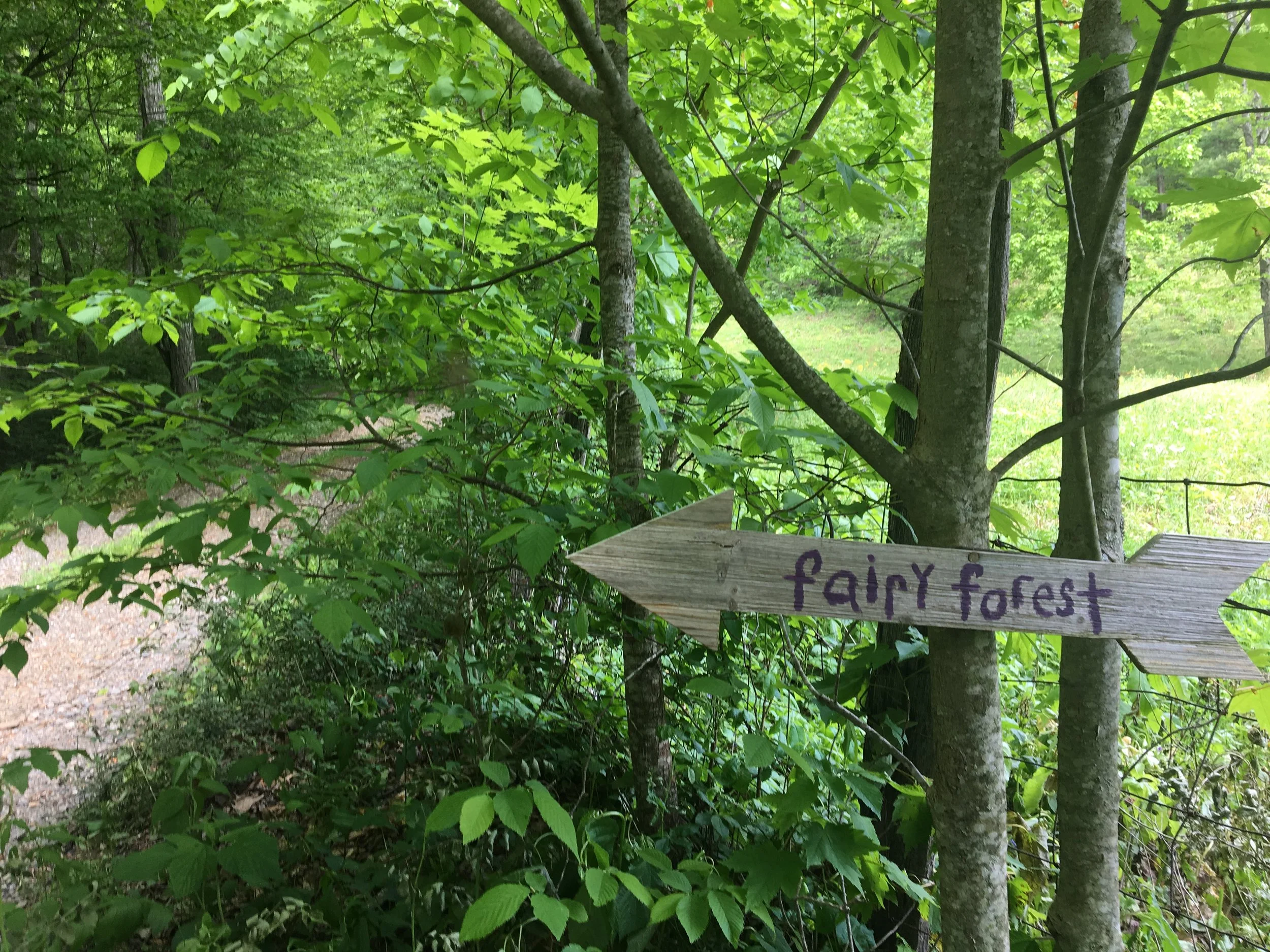By Betty Miller Conway
Walton tells me that I am getting carried away with it. I get his point. I do wonder about myself as I sit on the ground in the woods, painstakingly creating a tiny ladder of twigs that leads to a fairy door in a hollow tree. Most grown women have better things to do, and I know it. Indeed, there are lots of chores to do on the farm. It’s grass growing season, so the yards and pastures perpetually need mowing, the weeds grow faster than I can pull them up, and the herb garden beside our house clearly needs tending and watering. (Let’s not even talk about the inside work that need doing!) But it is a pretty day, and I am interested in a different kind of garden, one for the most elusive and treasured of guests—the fairies.
The fairy garden is in a wooded area of the farm just above our barn. It is a quiet green forest with a pathway meandering through poplars and maples. A stream babbles and giggles its way along rocks and ferns. The rushing water and the murmur of leaves rustling overhead muffle the sound of the roosters crowing in the barnyard below. Scarlet tanagers and chestnut-sided warblers perch in the highest branches, singing praises to the day.
It’s one of my favorite places on the farm. I love to spend time there crafting and tending home sites for the fairies. The fairies are not picky about their real estate. A door into a hollow tree works just fine. A moss covered stump serves as a dwelling with its own rooftop garden and shiny pool. An old birdhouse roof serves as a picnic shelter. Pebbled paths wind through the moss and ferns. A house of rocks near the stream boasts its own boat house and a red canoe in case the fairies want to navigate the deeper pools of the stream.
I've never actually seen the fairies, but I am sure they enjoy stargazing from their rooftop deck and listening to the music of the water from their creekside patio. They must come in during summer evenings and flit through the trees with the fireflies before settling in for the night. I imagine they hover in the leafy canopy during the day, watching our younger farm guests wander through the forest and squeal with delight as they discover each tiny dwelling. The children look up expectantly, hoping to see a glimmer of wings in the trees. The light filters through the leaves and makes quivering patterns on the forest floor.
Elsewhere on the farm, Walton uses his tractor to mow and create pasture. He makes a split rail fence to keep the horses out of the yard. He uses a track hoe to move rocks from the field, and then spends days erecting a stone wall bordering our Pioneer Homestead. He calls in men with heavy machinery to dig ponds for whiskered catfish and glimmering rainbow trout. He clears paths and creates trails for our guests to explore. The farm is crisscrossed with his fences and dotted with his structures.
But in the fairy garden I need only my hands and a few simple tools to create kingdoms. I build fences with sticks I find on the forest floor. I make a wall out of small rocks from the creek. I dam up the water with larger stones to make the fairies a peaceful swimming hole. I line the forest floor with pebbles and moss to create footpaths. I put miniature plants into inch-tall pots and use a scrap of moss as an emerald seat cushion for stick furniture. I set a table with acorn cap bowls.
It’s like going back in time and being a child again: creating worlds, imagining universes. My friend Pat and I used to spend hours playing in the creek and woods on my parents’ farm. One of our favorite things to do was to put a stick upstream of the farm bridge and then run over to watch it come out the other side. We had a fleet of stick canoes that we pulled with string up and down the gentle stream. We made simple structures along the creek for the chipmunks and wooly worms, and we dug holes along the bank for the silvery minnows. Back then, we didn’t know enough to worry about school shootings, climate change, and nuclear war. We were more concerned about getting home in time for supper, or that our creek creations might be washed away during a sudden thunderstorm later that night. And indeed, our creations were sometimes washed away, but the optimism of youth enabled us to construct them over and over in that little creek area on Chestnut Grove Road where we thought—for a fleeting summer or two—that anything was possible.
Maybe the real mystery of the fairy forest lies, not in the elusive fairies that flit unseen in its branches, but instead in its ability to recapture the magic of childhood. That makes it a realm full of wonder, as I think all places of the imagination must be. I guess Walton is right. I do get carried away-- in the best possible way.






